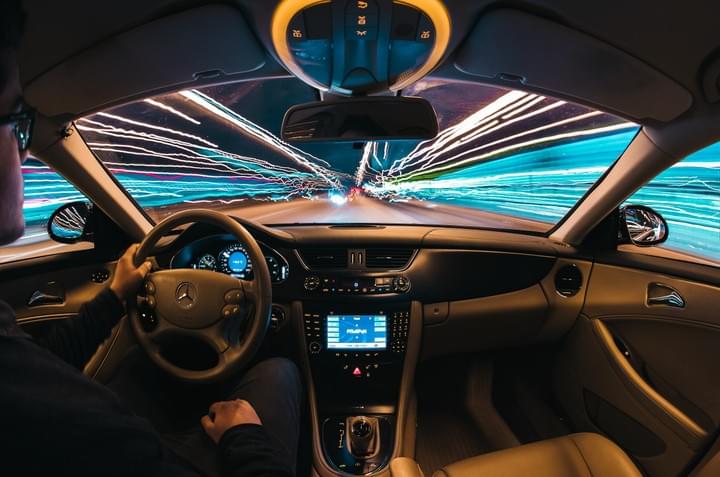

The AI Association
- …

The AI Association
- …
The AI Association

Automotive
Reinventing the driver experience:
Innovating for performance and safety
AI has had a great impact on the automotive industry, with immense potential for transformation. Applications in AI technology create exciting opportunities for both big business and startups around the world. This includes innovations in sensory perception for increased safety through driverless assistance, and intelligent vehicle maintenance with more responsive system analytics to increase engine life and customer satisfaction.
As a result of the innovations in electric and automated vehicles, major shifts are being made in developing next-generation city infrastructure and transportation networks. Here too AI is playing a vital role. Over the next decade, as advances in technology come into play, transportation networks will become smarter, safer, and more efficient for pedestrians, commuters, and drivers.
In the end, autonomy is going to save lives and give us back time while making transportation more enjoyable for everyone.

Synthesizing Data
Automotive manufacturers implement a range of human-machine interface technologies (HMIs), including voice controls, interior-facing cameras, touch-sensitive surfaces, and smarter, personalized platforms.

Cloud Advantage
Connected Vehicles generate significant amounts of data. It's expected that autonomous cars will make 4,000 GB per day. AI cloud platforms ensure that all this data is available whenever it's needed.

Exceeding Expectations
Automotive maufacturing is heading towards turning vehicles inot more than just means of transportation, and instead into a connected device, just like your smartphone.
AI Driving Features
1Driver Assist
Monitoring dozens of sensors to identify dangerous situations. Alerting the driver or taking emergency control.
2Driverless Automobiles
Autopilot software that goes beyond driving the car, including checking your personal calendar and driving to appointments.
3Predictive Maintenance
By monitoring thousands of data points per second, AI can spot minute changes that may indicate a pending component failure
4Driver Risk Assessment
By developing risk profiles based on a drivers individual risk factors found in the data, AI can accurately determine a drivers safety record.
5Car Manufacturing
Collaborative assembly line robots increase safety by adjusting their activity around human co-workers. AI also empowers robots to identify irregularities in materials, adjusting according for quality control.
6Driver Monitoring
AI can identify, recognise, and monitor not only the road, but the drivers as well. By observing facial features and activity, AI solutions can detect distracted or impaired drivers, then take appropriate safety actions to mitigate risk.
- The Path to Autonomous Driving
Consumers may be eager for the benefits and promise of a fully autonomous car in theory. But in practice, taking your hands off the wheel is unquestionably unnerving
Engaging the driver
One of the great benefits of a personalize, immersive infotainment system and digital cockpit is that it helps drivers tryst the system. The more clearly you understand what the car is doing and why, such as alerting you to your surroundings and what it plans to do in response, the more you trust the system.
Sensing for safety
Autonomous vehicles rely on the combination of various sensors, including camera, radar, lidar, cellular vehicle-to-everything, and positioning. The input from all of these sensors allows the vehicle to perceive and understand the environment, plan its path, and take the right actions to keep the car and passengers safe.
Smart Car - Smart city
Major shifts are being made in developing next-generation city infrastructure and transportation networks, and AI is playing a vital role in that development. Next-gen infrastructure will run AI for perception and sensor fusion to build road world models, which are basically very accurate 3D HD maps of the environment. Smart city infrastructure could handle inputs from multiple high resolution cameras
Get In Touch
helloai@
1717 N Street NW, Ste 1
Washington, DC 20036
©2023 The AI Association. The AI Association is Registered in Washington, D.C.



